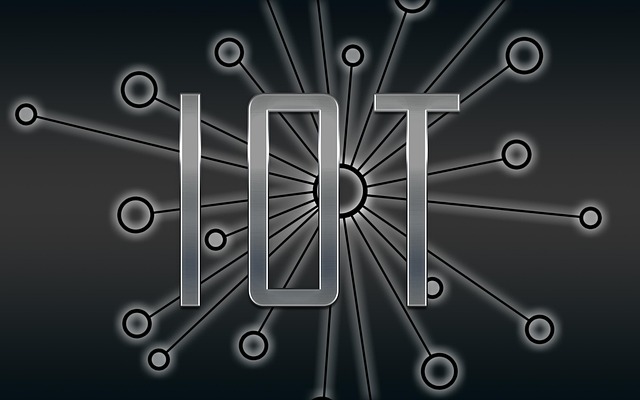
Von Arduino in die Cloud: IoT-Projekt mit ESP32, MQTT & React Dashboard
In dieser Anleitung bauen wir ein vollständiges IoT-System: Ein ESP32-Mikrocontroller liest Sensordaten aus und sendet sie per MQTT an einen Broker. Anschließend werden die Daten live in einem React-Dashboard angezeigt.
1. Voraussetzungen
- ESP32 Entwicklungsboard
- DHT22 oder BME280 Sensor
- MQTT-Broker (z. B. Mosquitto lokal oder HiveMQ Cloud)
- Node.js (Backend optional)
- React-Anwendung zur Visualisierung
2. ESP32 mit Sensor verbinden
Verbinde den Sensor mit dem ESP32, z. B. DHT22 Datenpin an GPIO 4. Lade die folgenden Bibliotheken hoch:
#include <WiFi.h>
#include <PubSubClient.h>
#include <DHT.h>
#define DHTPIN 4
#define DHTTYPE DHT22
const char* ssid = "DEIN_WIFI";
const char* pass = "DEIN_PASS";
const char* mqttServer = "broker.hivemq.com";
int mqttPort = 1883;
const char* mqttTopic = "esp32/sensor";
DHT dht(DHTPIN, DHTTYPE);
WiFiClient espClient;
PubSubClient client(espClient);
void setup() {
Serial.begin(115200);
dht.begin();
WiFi.begin(ssid, pass);
while (WiFi.status() != WL_CONNECTED) {
delay(500);
Serial.print(".");
}
client.setServer(mqttServer, mqttPort);
}
void loop() {
if (!client.connected()) {
while (!client.connect("esp32Client")) {
delay(500);
}
}
float h = dht.readHumidity();
float t = dht.readTemperature();
if (!isnan(h) && !isnan(t)) {
String payload = "{ \"temp\": " + String(t) + ", \"hum\": " + String(h) + " }";
client.publish(mqttTopic, payload.c_str());
Serial.println(payload);
}
client.loop();
delay(5000);
}
3. MQTT-Broker einrichten
Falls du Mosquitto lokal nutzt:
sudo apt update
sudo apt install mosquitto mosquitto-clients
sudo systemctl enable mosquitto
mosquitto_sub -h localhost -t "esp32/sensor"Alternativ kannst du HiveMQ Cloud verwenden.
4. React Dashboard erstellen
Erstelle ein neues React-Projekt und installiere den MQTT-Client:
npx create-react-app iot-dashboard
cd iot-dashboard
npm install mqttBeispielcode für das Dashboard:
// src/App.js
import { useState, useEffect } from 'react';
import mqtt from 'mqtt';
function App() {
const [data, setData] = useState({ temp: 0, hum: 0 });
useEffect(() => {
const client = mqtt.connect('ws://test.mosquitto.org:8080');
client.on('connect', () => {
client.subscribe('esp32/sensor');
});
client.on('message', (topic, message) => {
setData(JSON.parse(message.toString()));
});
return () => client.end();
}, []);
return (
<div className="dashboard">
<h2>ESP32 Sensor Dashboard</h2>
<p><strong>Temperatur:</strong> {data.temp} °C</p>
<p><strong>Luftfeuchtigkeit:</strong> {data.hum} %</p>
</div>
);
}
export default App;
5. (Optional) REST-API Backend
Falls du Daten speichern willst, kannst du ein kleines Express-Backend einrichten:
npm install express body-parser
// app.js
const express = require('express');
const bodyParser = require('body-parser');
const app = express();
app.use(bodyParser.json());
let readings = [];
app.post('/api/data', (req, res) => {
readings.push(req.body);
res.sendStatus(200);
});
app.get('/api/data', (req, res) => res.json(readings));
app.listen(3002, () => console.log('API läuft auf Port 3002'));6. Tipps für Deployment & Skalierung
- Nutze WSS für sichere MQTT-Verbindungen
- Deploy React-Dashboard z. B. auf Vercel oder Netlify
- Füge Authentifizierung hinzu (JWT, OAuth)
- Nutze InfluxDB oder TimescaleDB für Langzeit-Speicherung
Fazit
Du hast ein vollständiges IoT-Projekt gebaut: Sensor mit ESP32 → MQTT-Broker → React-Dashboard (und optional Backend). Dieses Setup bildet die Grundlage für echte Anwendungen in Smart Home, Umweltüberwachung oder industriellen Lösungen.
Im nächsten Teil: OTA-Updates, mehrere Geräte, Benachrichtigungen und Visualisierungen mit Grafana.

Fügen Sie Ihren Kommentar hinzu